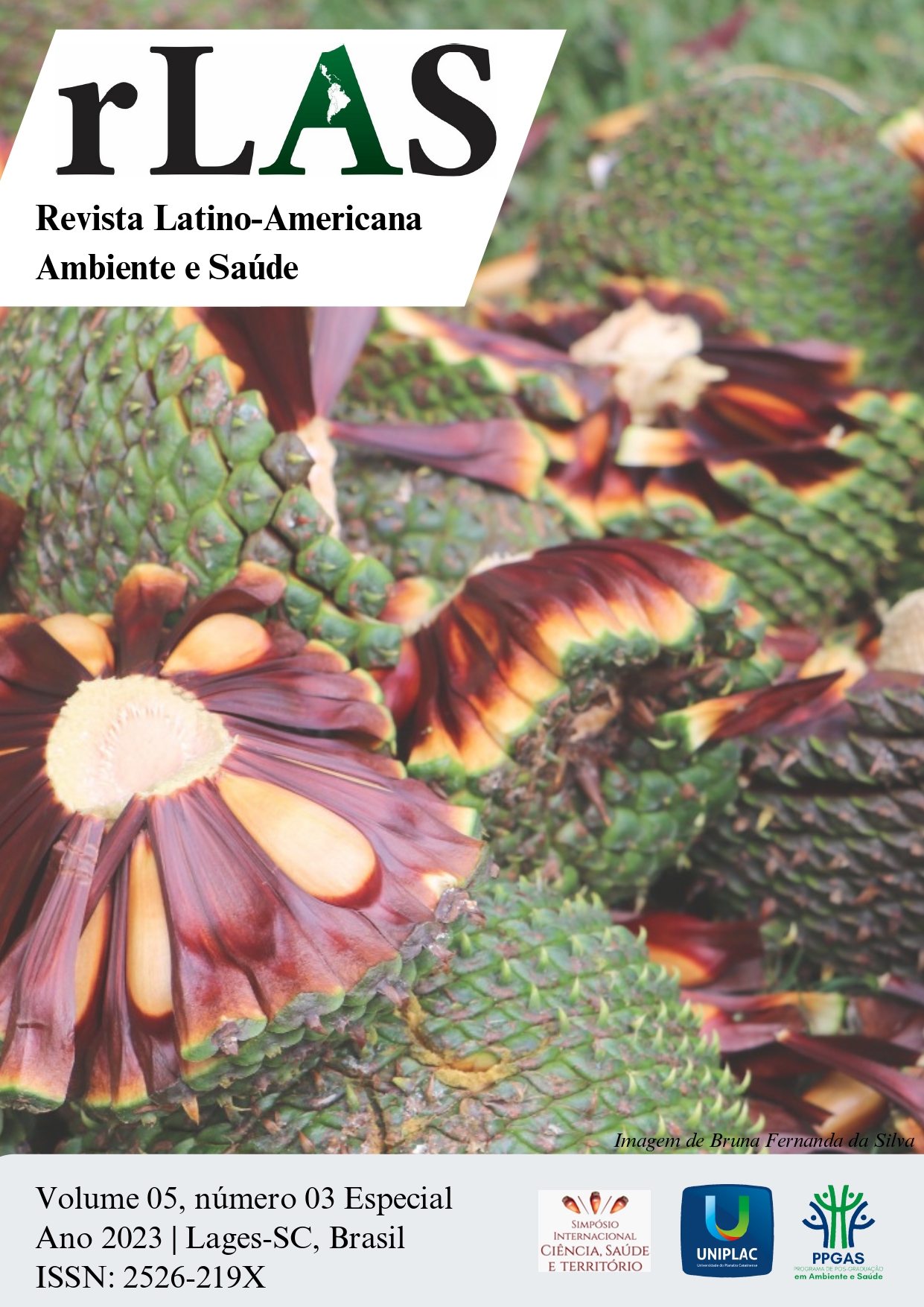Control of strawberry aphid with natural insecticides
Keywords:
Inseticidas botânicos. Aphididae. Manejo integrado de pragasAbstract
The strawberry aphid Chaetosiphon fragaefolii (Hemiptera: Aphididae) is one of the main pests of the crop, causing significant economic damage. There are synthetic insecticides for aphid control. However botanical insecticides from aromatic plants and essential oils may present potential to repel or kill these insects. The objective of this work was to test the lethal effect of Eucalyptus dunni essential oil (3%), as well as the action of the commercial products Matrine®, Prev-am®, Boveril®, Prev-am®+Boveril® and Pirate® on nymphs of strawberry aphid. E. dunni essential oil (EO) was obtained from fresh leaves by the hydrodistillation process in a Clevenger graduated apparatus. The chemical composition of E. dunni EO was analyzed by gas chromatography. For the bioassay, strawberry leaves infested with 10 nymphs per leaflet were used. 1mL of each sprayed treatment was used on each leaflet. The design used was completely randomized, with seven treatments and five replications. The major compounds in the E. dunni EO were α-pinene (15.51%) and 1,8-cineol (50.33%). Mortality was assessed every 24 hours for three consecutive days. The E. dunni EO showed a mortality rate of 88%, similar to commercial products Prev-am® (98%), Matrine® (98%) and Prev-am®+Boveril® (100%), showing efficacy in controlling C. fragaefolii in laboratory.
References
ANTUNES, L. A. et al. Morangueiro.1 ed. Brasília: Embrapa, 2016.
BATISH, D.R. et al. Eucalyptus essential oil as a natural pesticide. Forest Ecology and Management, v. 256, p. 2166–2174, 2008.
BENATTO, A. PENTEADO, S.C. ZAWADNEAK, M.A.C., Performance of Chaetosiphon fragaefolii (Hemiptera: Aphididae) in different strawberry cultivar. Sociedade Entomológica do Brasil, v.48, p. 1-7, 2019.
BERNARDI, D. et al. Aphid species and population dynamics associated with strawberry. Neotropical Entomology, v. 42, p. 628–633, 2013.
BERNARDI, D. et al. Guia para a identificação e monitoramento de pragas e seus inimigos naturais em morangueiro. 1 ed. Pelotas: Embrapa, 2015.
CHAIEB, I. et al. Chemical composition and aphicidal potential of Citrus aurantium peel essential oils. Entomologia Generalis, v. 37, n. 1, p. 63-75, 2018.
CIRIMINNA, R. et al. Limonene: a versatile chemical of the bioeconomy. Chemical Communications, v. 50, n. 97, p. 15288-15296, 2014.
DINAGRO. Disponível em: https://dinagro.com.br/matrine/. Acesso em 20 de abril de 2023.
EBADOLLAHI, A. et al. Enhanced potentials of terpene-rich essential oils of two Iranian eucalyptus species against Tetranychus urticae Koch. Journal of Oleo Science, v. 66, n. 3, p. 307-314, 2017.
JUNIOR, P. R. A. et al. Bioatividade de óleos essenciais de sassafrás e eucalipto em cascudinho. Ciência Rural, v. 40, n.3 p. 637-643, 2010.
KOPPERT. Disponível em: https://www.koppert.com.br/boveril/. Acesso em 29 de abril de 2023.
MOSSI, A. J. et al. Insecticial and repellency activity of essential oil of Eucalyptus sp. against Sitophilus zeamais (Coleoptera, Curculionidae). Journal of the Science of Food and Agriculture, v. 91, p. 273–277, 2011.
NERIO, L.S.; OLIVERO-VERBEL, J.; STASHENKO, E. Repellent activity of essential oils: A review. Bioresource Technology, v. 101, p. 372–378, 2010.
PREV-AM®. [Bula]. Local de fabricação: Rodovia PR 218 km 05 s/n – CP 181 Bairro Campinho – Arapongas/PR. Oro Agri Brasil Produtos para Agricultura Ltda., 2023.
OLIVEIRA, F.; AKISUE, G. Fundamentos de Farmacobotânica. 2. ed. Atheneu, SP. p 178, 2003.
SILVA, F. A. S.; AZEVEDO, C. A. V. The Assistat Software Version 7.7 and its use in the analysis of experimental data. African Journal of Agricultural Research, v. 11, n.39, p. 3733-3740, 2016.
TAK, J. H.; ISMAN, M. B. Enhanced cuticular penetration as the mechanism for synergy of insecticidal constituents of rosemary essential oil in Trichoplusia ni. Scientific Reports, v. 5, p. 12690, 2015.
TIAN Y.; ZHANG Z. Insecticidal activities of Sophora flavescens Alt. towards red imported fire ants (Solenopsis invicta Buren). Toxins, v.15, n. 2, 2023.


